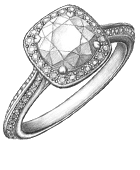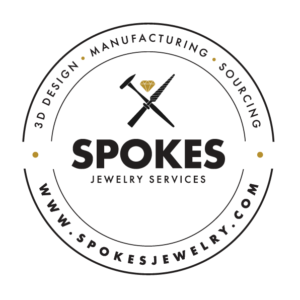Today, I’d like to talk debut collections. We hear from lots of budding designers in various stages of the jewelry design process. We’re always happy to help them as they launch their debut jewelry collection (or jewellery collection if in the UK)!
Maybe you went to design school. Perhaps you’ve worked in another aspect of the jewelry industry. Maybe it’s just a passion you’ve harbored for years. Regardless of impetus, now is the time. You’re gathering ideas, your designs are taking shape and you’re starting to think about the “HOW”. How do you get these ideas made into samples? In this post, we’re sharing some tips and hints to help you make this leap. This is with our years of manufacturing experience and having seen jewelry brands from around the world launch their debut collection. Some fell by the wayside. Some have gone from strength to strength and we’re making more and more new collections for them to this day.
Jewelry Design Tips
Cohesive Design
Have you ever gone to one of those restaurants with an endless menu that covers most of the cuisines of the entire globe? And then, as a result, you think – they can’t possibly be experts in all of them, right? I always worry when I see a “collection” that’s drawing on 8 different time periods, 6 different aesthetics and includes 5 different finishes. Why? Because it tells me that the designer hasn’t yet figured out who they are as a jewelry designer. The word is ‘collection’ – there needs to be some unifying themes or styles within the collection.
Much as we might like to we can’t serve every single woman in one collection. Finding your “voice” as a designer is key. It will translate later when you are pitching your piece to buyers. So they’ll then very easily understand where to put you in their store. As a result, the jewelry buyer will know what gaps and niches you will fill. It will also make your sales pitch more persuasive. So, aside from the jewelry sales aspect, it will save you unnecessary cost on a collection that’s just too big.
Take a step back for a moment and view your designs in their entirety. Can you easily link one to the next? Can you see that there is a theme or pattern emerging? That’s cohesion!
Avoid Gimmicks
One thing we see regularly from debut jewelry brands that never see from seasoned, experienced jewelry designers……gimmicks. By definition this would be a trick or device intended to attract attention. Typically this ends up being modular jewelry. “I want something that you can make into an earring but then it can be a necklace, and then you can hang it on your key chain or a purse…..oh, and it also doubles as a bottle opener”. Consider some of the luxury jewelry brands. They’re not selling gimmicks. They are selling beautiful designs made well. Design + Quality. That’s it.
Why do debut jewelry designers try to rely on these? I believe it’s fear. Feeling like the gimmick will sell if the design doesn’t. I promise you it won’t. Ugly design or bad quality will bring you down regardless. Its scary launching a jewelry collection and putting your name to it. If it was easy, they’d all do it. Ditch the doo-dads and focus on beautiful design. I’ll help you with the quality part!
Communicating Your Jewelry Design
Here’s a BIG one. This is the most important topic. You may be thinking you need to be a professional jewelry sketch artist (spoiler alert: you don’t) or need to pay for someone to develop your CADs for you (a good manufacturer will do this for you). On the other hand you may just be very loose about it and just send 100 web images with an email saying “how much are these?” (not if you want to be taken seriously you don’t). What is the best way to communicate jewelry design to your overseas jewelry manufacturer? See below for our pro-tips.
Jewelry Design Pro-Tips
- Your medium is the best medium. Are you a verbal person? Start typing. Do you like to doodle? Then grab a pencil and start doing basic sketches. Are you a 3D thinker? – grab some clay. The idea is to communicate as much as you can to the viewer.
- Measurements – Include them. Don’t leave it to the manufacturer to decide. How big do you want it to be? If it’s not possible, they’ll tell you or can advise but this should begin with you. It also makes it easier and quicker for them to interpret.
- Finishes – These can make or break a piece. Put some thought in now. High polish? A matte satin? A black plated raw finish?
- Logo – Develop a larger one that can fit on big pieces and a small one (such as initials) for tiny stud earrings etc. Where on each piece should it go?
- Clasp – Spring ring? Lobster? Chain length – 16? 18? Choker length? These may be boring details but will become part of your brand & aesthetic.
The key takeaway in communicating your design is that the more detail you provide, the quicker and easier will be the leap to sampling and your first sale. If you leave it to chance, either it gets pushed to the bottom or decided for you. A good jewelry manufacturer will work with you to provide options and advice but ultimately, you as the jewelry designer will have to sell them later. Luxury is very much in the details. Time spent on them now will save you regret later!

For more info on working with an overseas manufacturer, you can listen to our podcast interview with Flourish & Thrive. https://www.flourishthriveacademy.com/how-to-protect-your-intellectual-property-with-a-manufacturer-with-emma-gregory-boudah/

